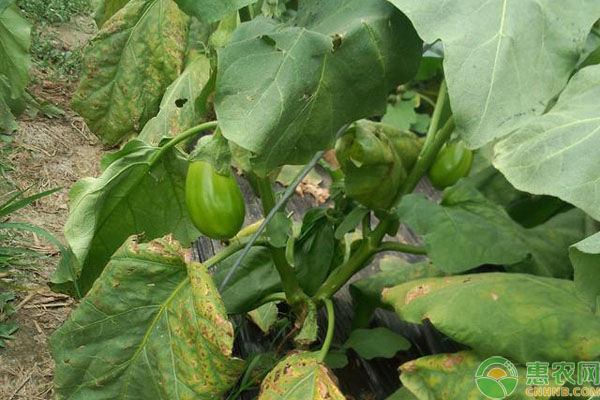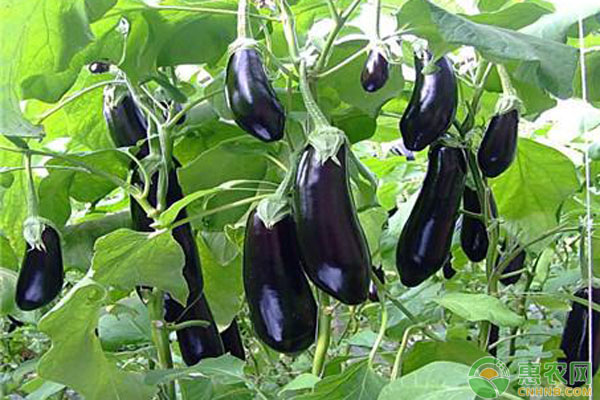Eggplant is a common family vegetable, and many people will grow some of it. For vegetable cultivation, the most distressing thing is nothing more than pests and diseases. Some people say that their own eggplant yellow leaves are not because of disease. For eggplant yellow leaves, Xiaobian helps you analyze and analyze.

There are two main reasons for causing eggplant yellow leaves:
Fat damage
This hazard often occurs on cloudy days or after the weather turns fine. Mainly due to the use of a large amount of unfertilized farmyard manure as a base fertilizer or improper application of fertilizer, resulting in excessive accumulation of ammonia, coupled with the lack of timely release of air in the greenhouse, eventually causing ammonia poisoning.
For plants that have fertilizer damage (soil damage, gas damage), it is necessary to timely watering at the right time to restore the physiological functions of the plants as soon as possible. In addition, it is necessary to maintain a certain chamber temperature. Foliar sprayed Harvest No.1, Xian Usu and other foliar fertilizers, preferably mixed with potassium dihydrogen phosphate.
If the root system of the plant is damaged, it is necessary to pay attention to rooting and rooting. Rooting can be used to root the roots, or rooting fertilizer (humic acid, microbial fertilizer) can be applied.
Drug damage
Mainly used in excess. Therefore, in the prevention and control of eggplant pests and diseases, we must choose the appropriate weather and the growth of eggplant plants according to the nature of the drug to make reasonable doses. For the recent management of eggplant, it is necessary to strictly control the concentration when using Shijiale, pyrimethanil and other agents to control gray mold.

In addition, it is not advisable to use medicine in the morning and evening, because the degree of stomatal opening and closing of the plant is small, which not only reduces the efficacy, but also increases the air humidity and increases the occurrence of diseases. The current season should generally be sprayed around 10 am. Experts advise that if you are planting round eggplant, it is best not to use pyrimethanil to control gray mold.
For plants that have phytotoxicity, the practice is to spray the harvest on the noodles, or to spray other foliar fertilizers. If found in time, spraying the water on the foliage or watering can alleviate the hazard. At the same time, it is necessary to increase the temperature of the greenhouse, especially the night temperature, in order to promote roots and roots.
Winter temperature is low, less fertilizer
Due to the low temperature and low ventilation in winter, the vegetable farmers have relatively few waterings in the winter, usually pouring once in about 15 days, which leads to the inability of topdressing to supplement various nutrients in time to make up for the lack of application of the base fertilizer. At the same time, some vegetable farmers do not apply chemical fertilizers in winter, which also aggravates the yellow leaf problem to some extent.
Other factors
In addition to fat damage, phytotoxicity, if the eggplant is lacking during growth, the deficiency can also cause yellow leaves of eggplant, such as magnesium deficiency and iron. The middle and lower leaves of the eggplant lacking magnesium are yellow, developing from the bottom to the top, and some develop along the veins, and the symptoms are obvious. Under the condition that the soil is acidic, rich in fertilizer and wet, eggplant is prone to iron deficiency, and the top and young leaves of eggplant plants lacking iron are yellowed.

The four points mentioned above are about the causes and prevention methods of the yellow leaves of eggplant. When you see the yellow leaves of eggplant, don't think it is a phytotoxicity. In fact, there are many factors that cause it. There are also four introductions in the content, each of which may lead to yellow leaves of eggplant. After reading the Xiaobian share, do you think that eggplant yellow leaves are such a truth?
Peptides Powder is also called Nano Oligopeptide Collagen (OCO, Nano active Oligopeptide Collagen, or Nano Collagen for short), also known as Oligopeptide, micro peptide, short peptide. Small peptides generally refer to oligopeptides composed of 2-3 amino acids, with an average molecular weight of about 300 daltons. The final products of protein (collagen) digestion in the digestive tract are usually small peptides rather than free amino acids. Small peptides can be completely absorbed and enter the blood circulation in the form of two or three peptides. Small peptides play an important role in protein nutrition.
peptides powder buy,peptide powder benefits,peptides powder for sale,peptides powder for bodybuilding
Shaanxi YXchuang Biotechnology Co., Ltd , https://www.peptidenootropics.com